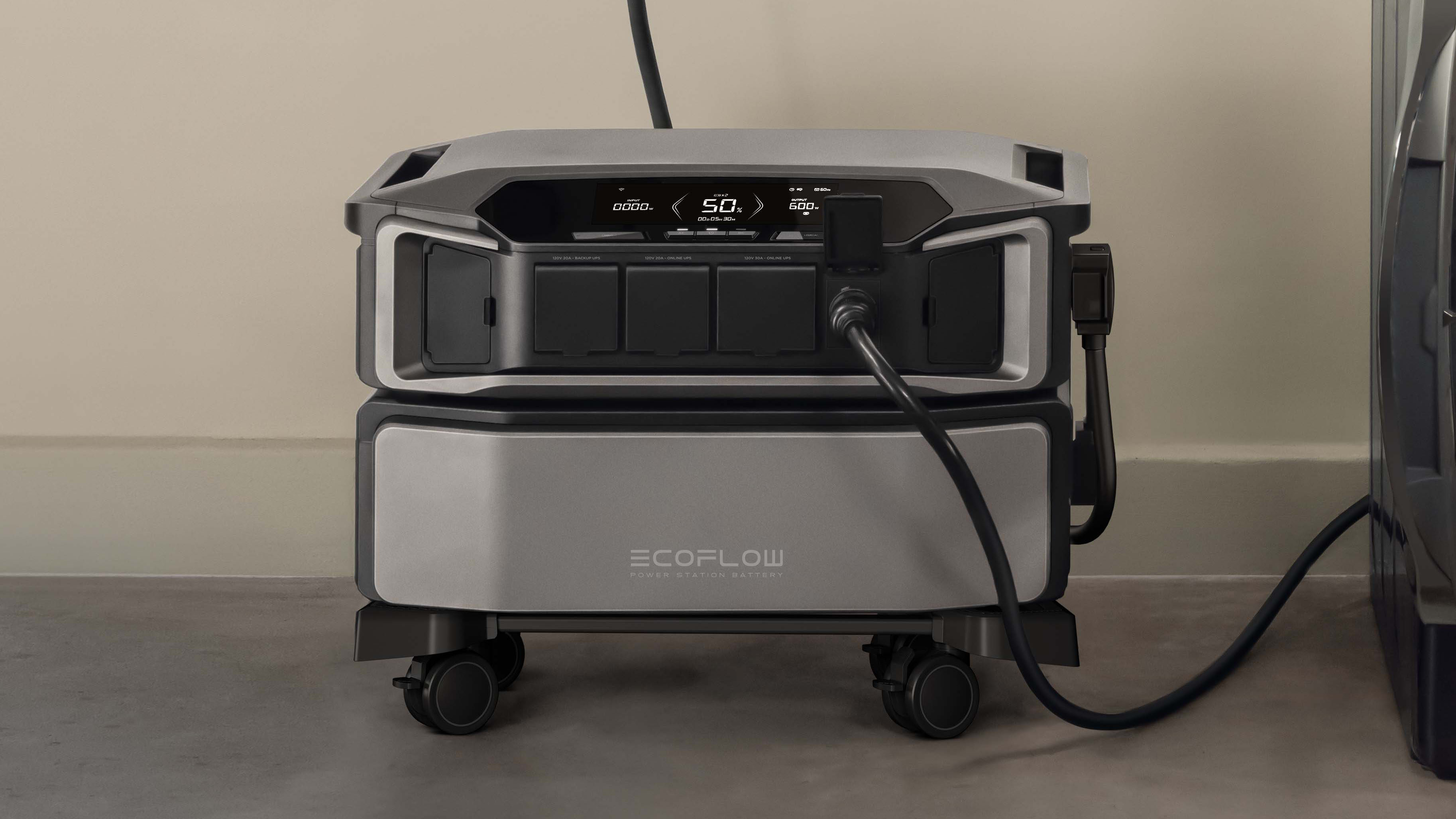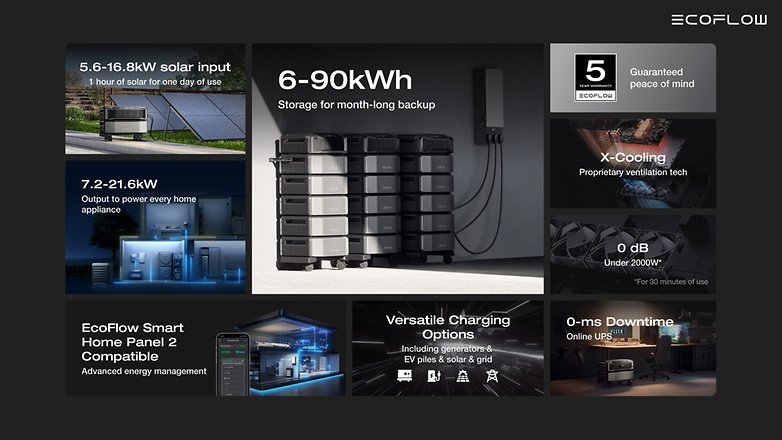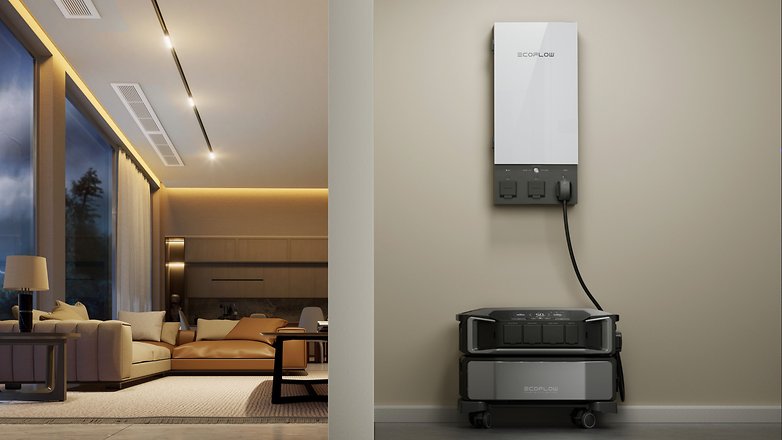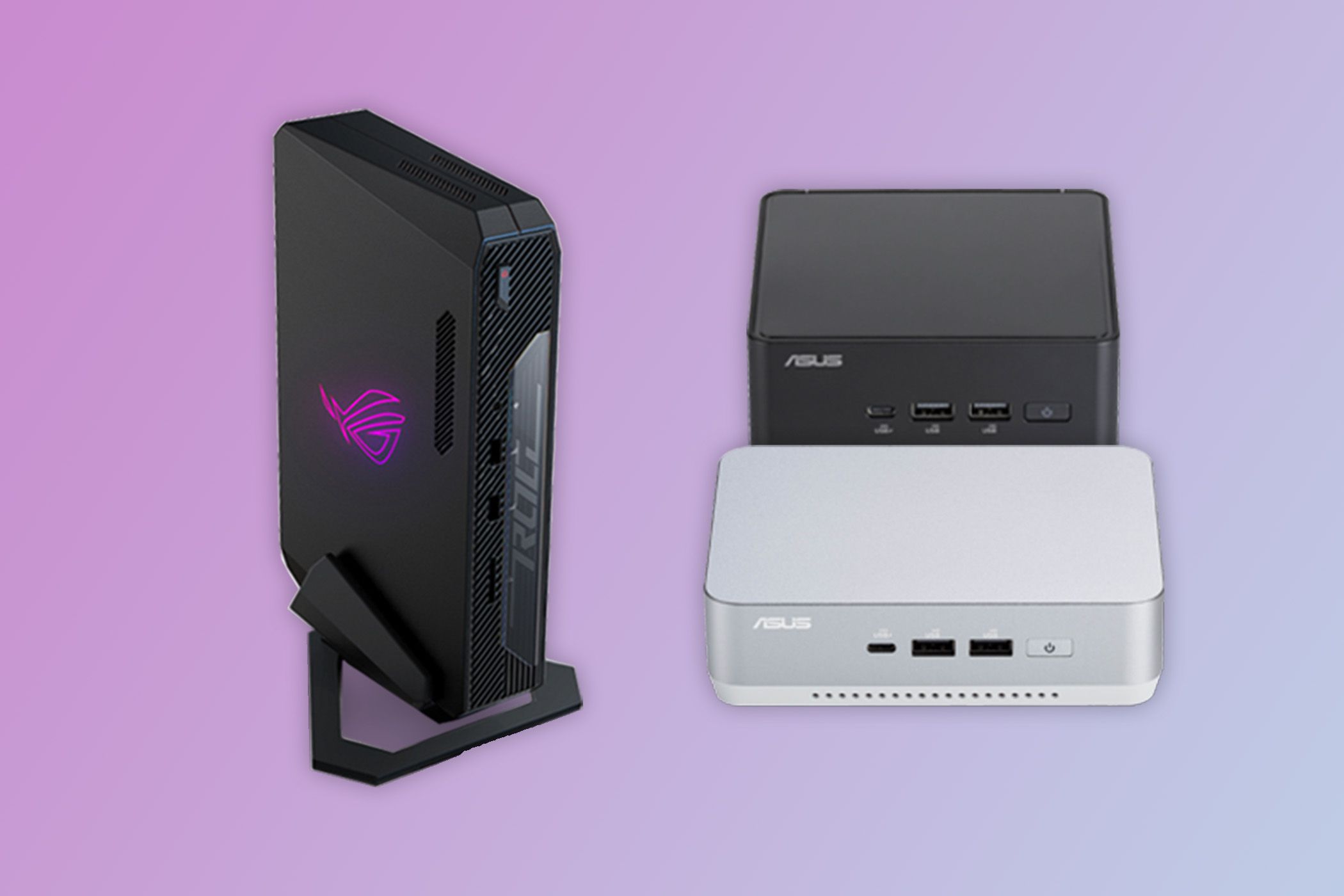
At CES 2024, EcoFlow unveiled a new power station that can be configured as a modular home energy storage system. In its minimum configuration, the Delta Pro Ultra offers a capacity of 6 kWh and an output power of 7,200 W. Using the new Smart Home Panel 2, you can integrate three of these power stations into your home electrical grid, giving you up to three times the power and up to 90 kWh capacity. Find out what intelligent protection mechanisms the system offers and how much it costs!
The EcoFlow Delta Pro Ultra itself is initially “just” a battery inverter. The 69 x 48 x 21 cm box does not contain any battery capacity, but is dependent on additional connected batteries. These individual battery modules are similar in size to the inverter and each feature a 6,144 Wh capacity.
You can connect up to a maximum of five batteries per inverter, providing you with a steady 30 kWh. EcoFlow relies on lithium iron phosphate (LFP) for its battery technology. After 3,500 charging cycles, the cells should still offer 80% of their initial capacity.
EcoFlow Delta Pro Ultra: Up to 30 kWh capacity
Back to the Delta Pro Ultra inverter module. This converts the direct current from the batteries into alternating current. You have six 240 V sockets available here, delivering a total possible output power of 7,200 W. However, the output power per socket is, of course, limited to 3,600 W.
There are also two USB-C and two USB-A outputs as well as a 12 V DC output. What is more interesting, however, is the proprietary connection that you can use to connect the Delta Pro Ultra to the Smart Home Panel 2. We’ll come back to that in a moment.
The Delta Pro Ultra also offers various inputs to charge the batteries. The two MPPT inputs, which offer different voltage ranges, are of interest to solar-powered system owners. The first MPPT input was designed for high voltage and accepts a maximum of 15 A at 80 to 450 V.
This results in a solar power of 4,500 W. The second MPPT input is already active at 30 V and can accept a maximum of 150 V. With 15 A, a maximum of 1,600 W is possible. The inverter therefore offers broad flexibility for small and large PV systems.
Of course, you can also charge the Delta Pro Ultra via the power grid. If you have a dynamic electricity tariff with variable prices, you can charge the storage system when prices are low to take full advantage of the situation. We will find out whether EcoFlow offers an automatic option here, such as via the Tibber API! In an emergency, you can also charge the power station using a gas generator.

What can the EcoFlow Smart Home Panel 2 do?
The Smart Home Panel 2 serves as a bridge between the energy storage system and your home network. You connect the Delta Pro Ultra directly to your power box via the device and can feed the energy stored in the Delta Pro Ultra into your household.
You can connect a total of three Delta Pro Ultras to one Smart Home Panel 2. If you were to maximize the use of the power storage unit, this would result in triple the output power of 7,200 W, i.e. 21.6 kW! You can divide the power into twelve load circuits via the panel.
Of course, this also applies to the maximum possible capacity. A system with the Delta Pro Ultra supports a total of 15 battery modules with 6,144 Wh each, i.e. 92 kWh.
Of course, you can also begin small with just one inverter and one battery before gradually expanding the system. We will find out ASAP whether you can supply all three phases with power via the Smart Home Panel 2 with just one Delta Pro Ultra or whether three inverters are required.

Retrofitting the EcoFlow Delta Pro Max as a PV storage system
If you now own not just one, but two or three Delta Pro Max in your home, you can also combine the solar inputs and have two, four, or six strings. The maximum possible PV input power per Delta Pro Max is 6,100 W.
According to EcoFlow, the Smart Home Panel should be effortless to integrate into the home network where any electrician can carry out this work without any special EcoFlow training. This should make the Delta Pro Ultra ideal as a PV storage system for uncomplicated retrofitting. The existing inverters can then possibly even be retired (or sold on eBay).
Both the Delta Pro Ultra communicate with your smart home via WLAN and Bluetooth, while the Smart Home Panel 2 also offers an Ethernet connection for a more reliable connection. With the Smart Home Panel 2, the EcoFlow Delta Pro Ultra also serves as an uninterruptible backup power supply.
According to EcoFlow, the box switches your entire household from the primary operation to battery operation with a maximum delay of 20 ms. You can also connect particularly important devices directly to the Delta Pro Ultra according to the manufacturer, with a switching time of 0 ms.
Finally, the security function called “Storm Guard” is also an interesting feature. Here, the Delta Pro Ultra retrieves current weather data from Weatherbit and prepares itself for approaching storms. Specifically, the storage system does not leave any space in the battery modules for solar power, but fills them up to the maximum to have as much stored energy as possible in the event of a blackout.
EcoFlow Delta Pro Ultra: When is it arriving?
The EcoFlow Delta Pro Ultra will initially be launched in the US and Japanese markets, with the home storage system also arriving in Europe later this year. In the USA, the Delta Pro Ultra with a battery costs $5,799 at launch, while the Smart Home Panel 2 costs $1,599. Until February 9, you can pick up a bundle for $7,199.






